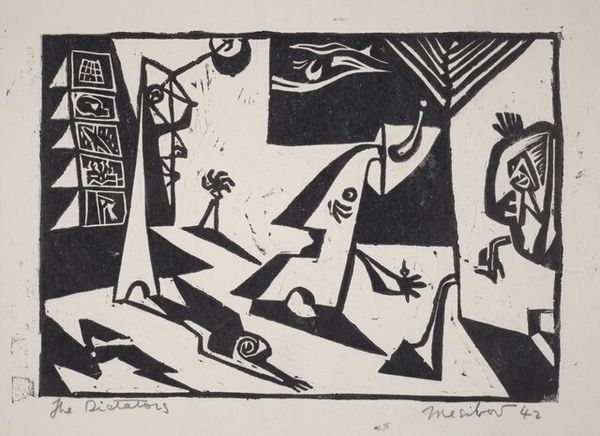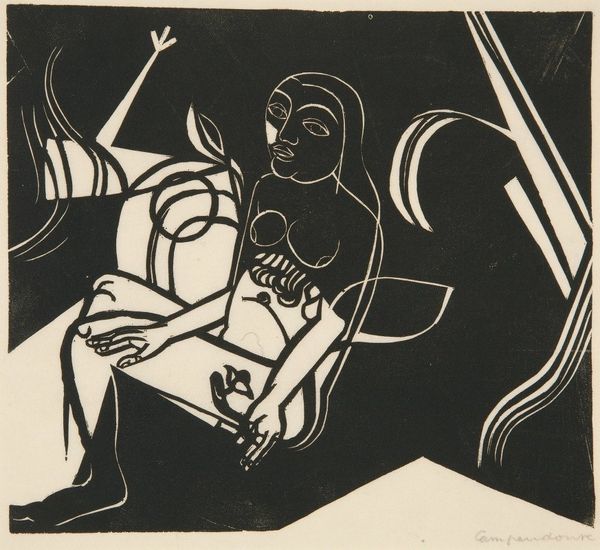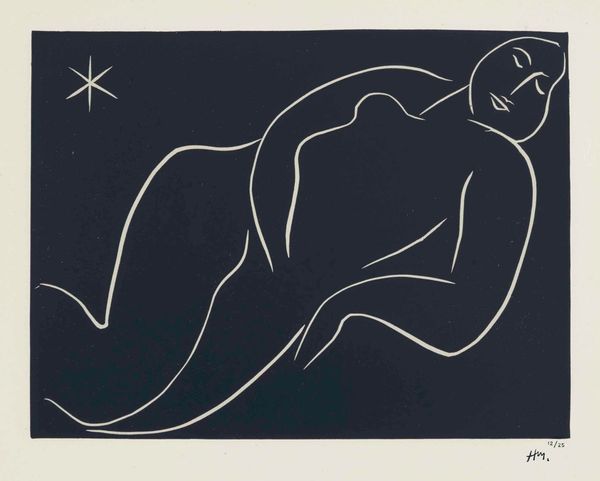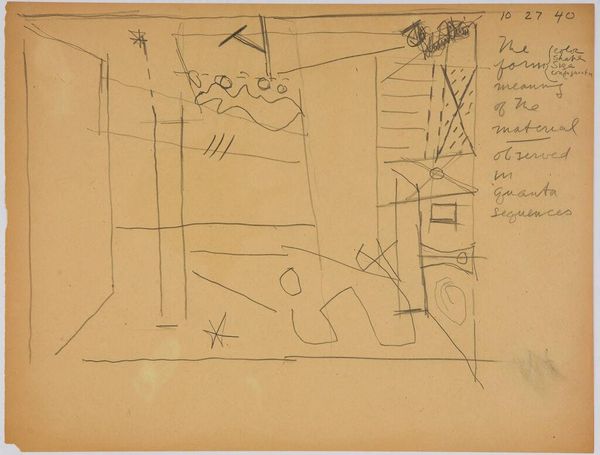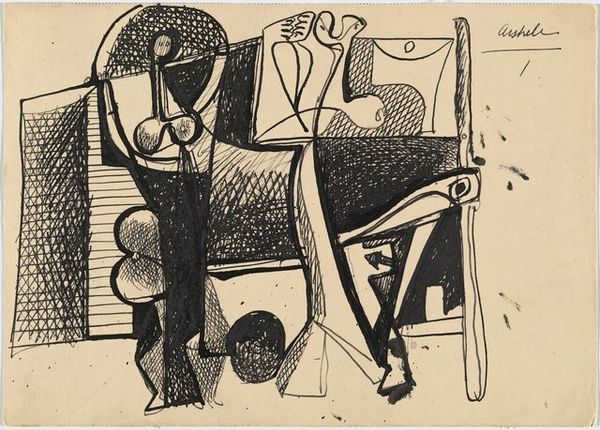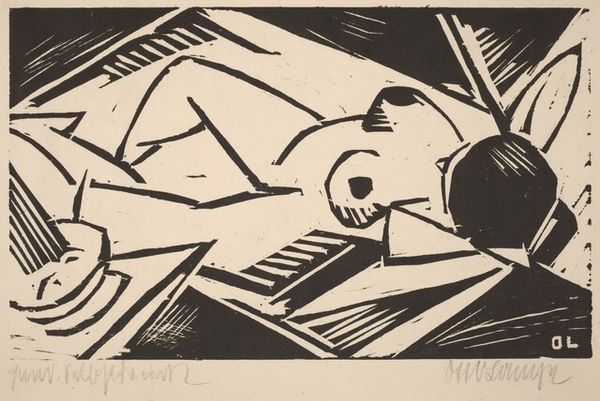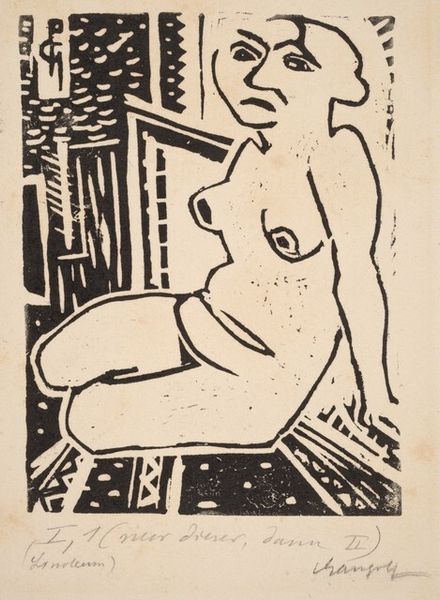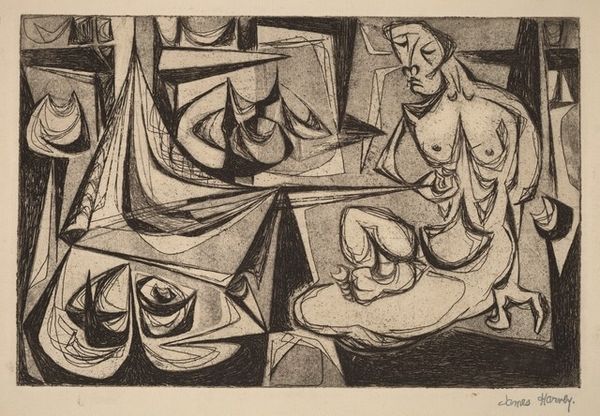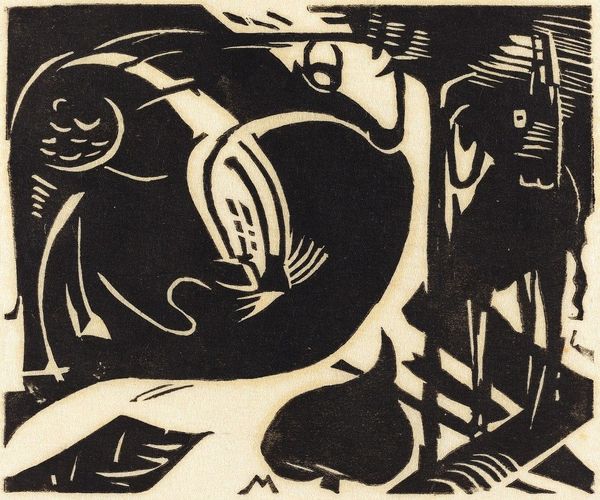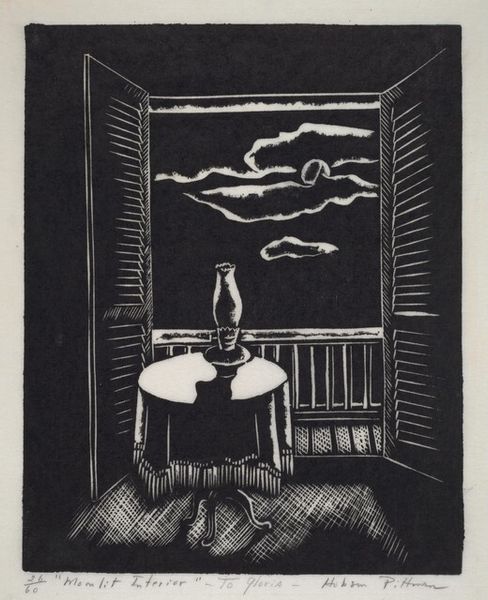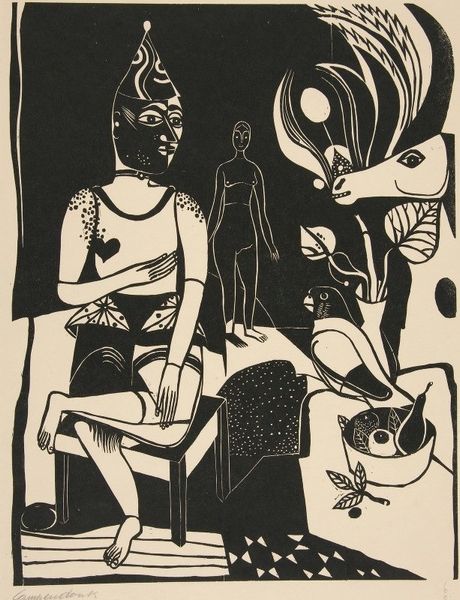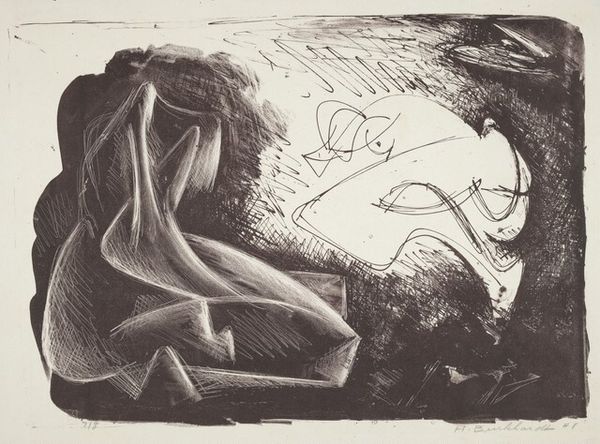
drawing, graphic-art, print
#
drawing
#
graphic-art
# print
#
figuration
#
line
#
italian-renaissance
#
monochrome
Dimensions: block: 130 x 163 mm sheet: 232 x 257 mm
Copyright: National Gallery of Art: CC0 1.0
Curator: Attilio Salemme’s “Magic Mouse,” created in 1950, employs graphic art techniques in monochrome. It is rather whimsical at first glance. Editor: Yes, immediately it reads to me as an invocation of folklore and the symbolic realm, something between a child's dream and a ritual space. The mouse, centered in the composition, adopts a meditative pose. It feels like he’s the nucleus of some hidden power. Curator: Salemme, an Italian-American artist, often explored themes of displacement and identity within his work, and I find it hard to resist interpreting this scene through the lens of immigrant experience. Editor: Ah, tell me more. I can see it; I was drawn in by the universality of visual symbols here, especially the star. I see here the connection to hope and navigation, a longing for something beyond our immediate surroundings. Curator: Exactly! This scene feels intensely private and perhaps represents the "magic" of cultural retention or perhaps the conjuring of a new hybrid identity. The figure exists between worlds, represented by what seem to be doors or portals to some unknown. Editor: Interesting. I’m particularly drawn to the altar-like table bearing what appears to be a six-pointed star. The number of sides adds to the notion that something is out of alignment, the image creates such tension with this tiny tweak of a common symbol. This symbol contrasts, though, with the single star hanging above—guiding light. There is much here to be worked through and untangled in this intimate scene! Curator: And look at how Salemme deliberately uses negative space. The white outlines that define the mouse and the surrounding objects pop from the darker ground and create a unique dialogue of presence and absence within the frame. It speaks to ideas about self-representation and being seen, and unseen. Editor: The rough hewn aesthetic certainly reinforces that duality—as well as creating the sense of raw emotion—do you think this emotional honesty relates to the time? Is there something postwar at play? Curator: Absolutely. The post-war era in the United States, which had become his country of immigration, was riddled with complexities for those who were new arrivals. It was a time of both great opportunity and of social unease. Editor: Understanding that context really does alter my reading, I’m glad we were able to think about it with an intersectional, and socio-historical lens! I feel more familiar now with what the piece has to offer. Curator: Absolutely, by acknowledging the multi-layered, personal and cultural background from which the work comes, Salemme’s intimate moment is so enriched.
Comments
No comments
Be the first to comment and join the conversation on the ultimate creative platform.
